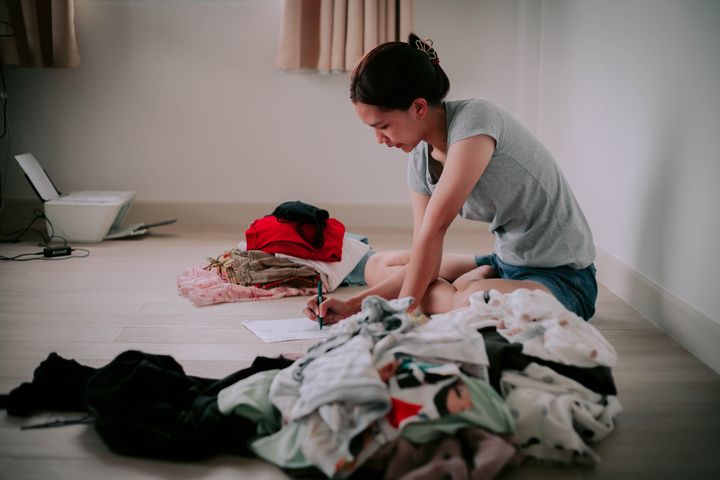
I’ll say it: some mourning processes are absolutely wasted on the dead.
Confessions of lifelong admiration? A chic all-black-clad gathering of your nearest and dearest? I could go for those now, TBH. And now, it seems I have another process to envy (thankfully, it’s appropriate for the living) – Swedish death cleaning.
Swedish what now?
The process, known in Swedish as döstädning, is designed to make it easy for your loved ones to pack away your stuff after you’re gone.
It involves simplifying your life by clearing away your old clutter, with the ultimate aim of chucking out more stuff than you accumulate.
And while cleaning is a big part of the process, Swedish death cleaning is much more of a minimalist exercise in intentionality than it is a weekend-long purge.
The goal is to have a true ‘place’ for everything in your life instead of mindlessly accumulating objects that end up being more of a nuisance than a beloved item (my enormous collection of unread books and I are trying not to feel offended).
The cleaning approach is the topic of Margareta Magnusson’s book, The Gentle Art of Swedish Death Cleaning: How to Make Your Loved Ones’ Lives Easier and Your On Life More Pleasant.
She mentions that you should start the system aged around 65, but IMO, it makes too much sense to hold back on.
So, how do I get started?
First of all, there’s no need to get into a decluttering frenzy.
The whole point of death cleaning is to slowly ensure that you’re surrounded only by things that matter to you, so don’t toss the entire contents of your bedside cabinet away in the name of ‘living clean’.
You’ll want to start with the easy (read: massive and annoying) things first.
That mattress you’ve been itching to throw out? The used-once-then-neglected paddleboard you bought during your brief ocean fixation phase? Yeah, those should be the first to go.
After all, Magnusson reckons “Mess is an unnecessary source of irritation” – so the clearing process will be easier if you chuck out the things that annoy you most first.
And you shouldn’t make death cleaning a one-off thing, either. Magnusson says that “Death cleaning is not about dusting or mopping up; it is about a permanent form of organisation that makes your everyday life run more smoothly.”
In other words, a one-off purge won’t cut it.
Don’t forget to include your online clutter, too
It can be tempting to limit your cleaning to the most satisfying, obvious parts of your life, like that crowded mantlepiece or the chaos in your attic.
But when it comes to Swedish death cleaning, ‘clutter’ just means anything that gets in the way more than it enriches your life, and which would be overwhelmingly annoying for someone else to clean up.
And yes, that does include your 5,687 unread emails (number sourced from nowhere in particular *cough cough*).
Remember, it’s about starting to sustainably shed more of life’s excess materials than you gain. So I reckon it’s about time we make a pact to delete three unflattering old selfies and blurred pocket pics for every new one we take, don’t you?
Think about what your extra stuff really means to you and others around you
A core part of Swedish death cleaning is centreing the other people in your life, and then considering how all your belongings affect them.
Of course, this consideration has an incredibly specific application when you’re actually using it for death cleaning – in that case, it’s worth asking yourself if your daughter really has room to store your beloved grandfather clock.
But anyone who’s lived with more than two other people will know how intrusive other people’s accumulations can be. Consider whether or not your unused, spare room-consuming camping gear or cutlery drawer-dominating melon baller is as meaningful to you as it might be annoying to those around you.
And you can keep others in mind when disposing of your items, too. If all this chucking out seems wasteful, remember, it doesn’t need to be – part of Swedish death cleaning is thinking about who might want to use the stuff that isn’t serving you anymore.
In other words, gifting, donating, and selling are part and parcel of the process.
So, fellow hoarders, if you’re also growing weary of your Vague Piles of Indiscriminate Stuff, it might be time for both of us to take a lesson from the Swedes.